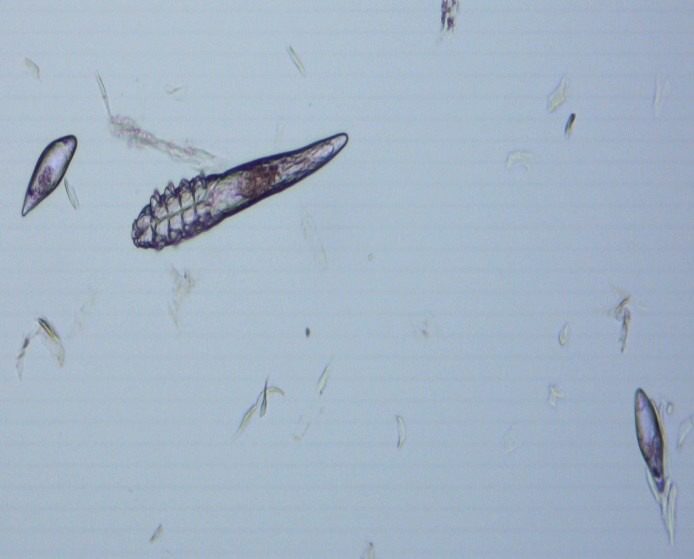
Di kûçikan de demodîcos, an tikandina binê çerm: nîşan, dermankirin, pêşîlêgirtin
Demodex canis – mites up to 0,3 mm in size that cause demodicosis in dogs are part of the skin microflora. At what point does the disease begin to develop and how to protect the pet?
Microscopic demodex canis is found in the skin and ear canals even in healthy dogs and does not entail any consequences. They live in the hair follicles of the animal, feeding on dead cells of the epidermis. But with a decrease in the pet’s immunity, for example, after taking antibiotics or after a serious illness, ticks begin to multiply intensively. This leads to the development of demodicosis and skin lesions.
Being part of the microflora of the skin, the subcutaneous tick in dogs lives outside its habitat for no more than an hour. And even getting on the skin of another dog, he can no longer survive there. Therefore, neither a person nor other pets can become infected with demodicosis, unlike ordinary ticks. The only way for ticks to enter a dog’s body is through close contact of newborn puppies with their mother’s skin.
Contents
Sedemên demodicosis
Getting on the skin of a puppy, ticks become part of its normal fauna and may not manifest themselves in any way throughout the life of the dog. However, some factors cause the development of demodicosis:
- parastinê kêm kirin
- temenê pîr,
- kêmxwarinî,
- period of estrus and pregnancy,
- stress state,
- pêşbîniya genetîkî,
- the presence of other parasites in the body,
- tumorên xerab,
- hin dermanan digirin.
Symptoms of the appearance of a subcutaneous tick
Clinically, there are four types of demodicosis:
- localized – with a small number of foci up to 4-5 cm in size,
- generalized – with a large number of foci with an area of u5bu6bmore than XNUMX-XNUMX cm,
- juvenile – demodicosis in puppies and young dogs,
- demodicosis adults,
- podomodekoz – the focus of the disease falls on the skin of the paws, fingers and interdigital spaces.
Often the disease begins with a localized type and progresses, spreading throughout the body of the animal and flowing into generalized demodicosis.
Signs of demodicosis in dogs:
- windabûna por,
- the appearance of tangles if the dog’s coat is long,
- redness and peeling on the skin,
- xurîn,
- kelandin,
- edema,
- otitis, sulfur plugs in the ears.
Demodicosis and decreased immunity also lead to the development of infections and other common skin diseases.
Demankirinî
If you find signs of demodicosis, you should immediately contact a veterinarian-dermatologist who will do the necessary tests to confirm the diagnosis. Usually the doctor examines the dog and takes scrapings from the skin. If the presence of ticks is confirmed, the specialist prescribes the appropriate treatment.
It is important to understand that demodicosis does not occur just like that – certain factors that need to be eliminated lead to its appearance. That is why it is impossible to make a diagnosis on your own, without visiting a veterinarian.
Pêşîlêgirtina demodîkozê
As such, the prevention of demodicosis does not exist. It is necessary to carefully monitor the health of the pet, its nutrition and conditions of detention. It is especially important to support the animal’s immune system.
Binêre jî:
- Lênêrîna kûçikek bi çermê hestiyar
- Guh û Çerm: Dermankirina infeksiyonek fungal li kûçikan
- Alerjiyên Kûçik çawa dixebitin û hûn dikarin çi bikin da ku alîkariya heywanê xwe çêtir hîs bikin





